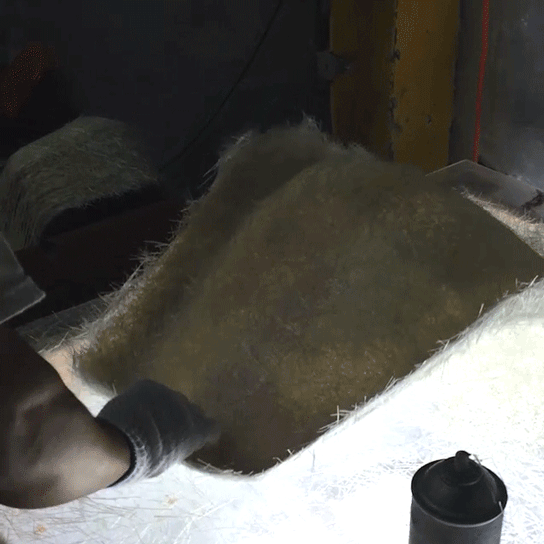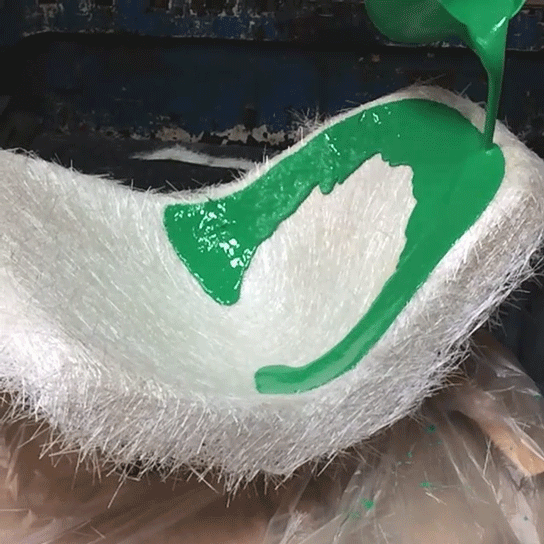The story of the Eames Plastic Shell Chair really began more than ten years prior to Charles and Ray’s 1950 début of their now iconic design for Herman Miller. Understanding this decade-long evolution not only helps to shed light on Charles’ oft-quoted “The details are not the details. They make the design”; it says a lot about the responsibility Herman Miller and the Eames Office and family have assumed at Charles and Ray’s request, to stay true to the designers’ tireless drive to improve and refine their designs.
The Eameses were notoriously material agnostic, and the seeds of the plastic shell we know and love today were really planted in the late 1930s, when Charles and Eero Saarinen first began exploring plywood seating in curved forms at the Cranbrook Academy of Art, where Charles served as the head of the design department. Saarinen’s father Eliel was the head of Cranbrook, and Eero was a junior partner at his father’s architecture office. It is likely that both Eames and Eero were influenced by the work of Finnish architect Alvar Aalto, who had lectured at Cranbrook in the early 1930s and was well known for his bent plywood furniture. Eames and Saarinen’s first attempt at shaping plywood was realised in a chair concept for Eliel’s design for the Kleinhans Music Hall in Buffalo, NY, in 1939. While that chair had two-dimensional curves, their next design, an entry for the Museum of Modern Art’s “Organic Design” competition in 1940, had three-dimensional curves. This piece won first prize, but it was only produced in very limited numbers and not anywhere near to their desired quality. By this time Charles had met and married Ray Kaiser, a student at Cranbrook, and the two moved to Venice, California, to open their own office in their name. Eero abandoned the project, but Charles and Ray were determined to figure out a completely new process for moulding plywood into compound curves.
Charles and Ray continued to experiment with their new technique for moulding plywood, and their efforts yielded stretchers, lightweight stackable leg splints (1942) and a glider seat (1943) for the US Navy. When the war ended, they returned to the concept of a mass-produced chair. Despite their best efforts, they were still unable to produce a single-shell plywood form but instead landed on a compelling alternative: a chair comprised of separate moulded plywood panels for the back and seat, which would become the Eames Moulded Plywood Chair (1946), which is still in production today and was subsequently named “Best Design of the Century” by Time magazine. Two years later, they produced a single-form shell chair made out of stamped metal for Museum of Modern Art’s “International Competition for Low-Cost Furniture Design”. It took second place in the competition, but the neoprene-coated prototype was too costly to produce. So Charles and Ray began looking into new materials such as plastic reinforced with fibreglass, a material that could be moulded into organic shapes and produced cost effectively but which had not been used in a consumer application before.
Released in 1950, it was this iteration that went on to become the first mass-produced plastic chair, but it was not the end of the design’s evolution. Through the years, colour and height options, shock mounts, base variations and choices of upholstery have redoubled, making the chair not only easily reproducible but also highly customisable. Manufacturing processes have also been closely monitored and modified, and in the late 1980s, almost a decade after Charles’ death in 1978, the environmental implications of fibreglass production were called into question by Ray and Herman Miller. By the early 1990s, Herman Miller ceased production. After years exploring more sustainable solutions, the company reintroduced the Moulded Plastic Shell Chair in 100% recyclable polypropylene in 2001, based on prototypes in the Eames Office archives that Charles and Ray had made with fibreglass-free plastic in the 1970s. In 2013, again working with the Eames Family, Herman Miller realised Charles and Ray’s vision for the shell chair design in a new and quite appropriate material – moulded wood – thanks
to advancements in the 3D veneer technology, and this year, the company has reintroduced the Shell Chair in a sustainably reformulated, GREENGUARD Gold Certified moulded fibreglass as well as in upholstery.
Taking off where the Eames left off with their 1970 film, “The Fiberglass Chairs: Something of How They Get the Way They Are”, WHY revisits the fibreglass production process in our fibreglass manufacturing facility in Ashtabula, Ohio, and in Herman Miller’s own Greenhouse facilities in Zeeland, Michigan, in ten bite-sized videos that we’ll be releasing over the course of two days on Instagram (along with some corresponding gif trailers below). It will explore the ways in which Herman Miller is honouring the Eames original design and ethos by pushing the manufacturing process and quality to be the best and most sustainable that it possibly can.
“The Eameses were notoriously material agnostic, and the seeds of the plastic shell we know and love today were really planted in the late 1930s, when Charles and Eero Saarinen first began exploring plywood seating in curved forms at the Cranbrook Academy of Art.”

1. Coloured resin is mixed in vats
By employing technology used mainly in the automotive and manufacturing industries to create non-cosmetic performance parts, Herman Miller’s new

2. Preforms are removed from the CNC machine and inspected
To create preforms for the new Shell Chairs, a “dry binder process” is used as opposed to the “wet process” used in conventional

4. Resin-coated preform is placed in press
Once the resin has been evenly applied to the preform, the shell is moved onto the press, where a combination of heat and pressure are applied to the resin-coated preform. The press cuts along the contour of the chair to eliminate excess

6. Shell edges are sanded
The edges of the shell are sanded manually and then finished with an electric sander. The chair is then wiped down and bagged. From here it’s inspected one more time by a different factory worker who is searching for imperfections. After it passes inspection, it is sent to the Herman Miller Greenhouse facility.

7. Shock mounts are applied to the base of the shell
The base of every shell is cleaned systematically in order to adhere to the shock mounts most effectively. Glue is applied to each shock mount by a machine, and a tray carrying the newly cleaned shell is set down on the shock mounts. The shock-mounted shells are set to cure on a










